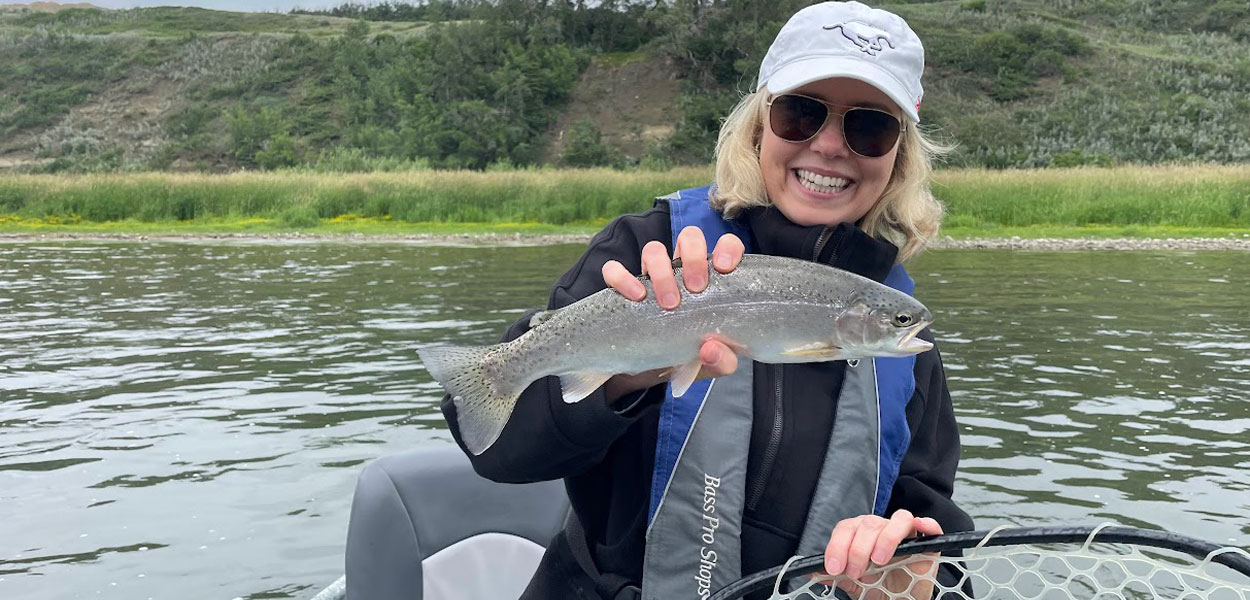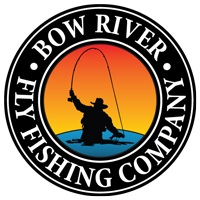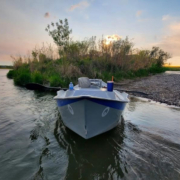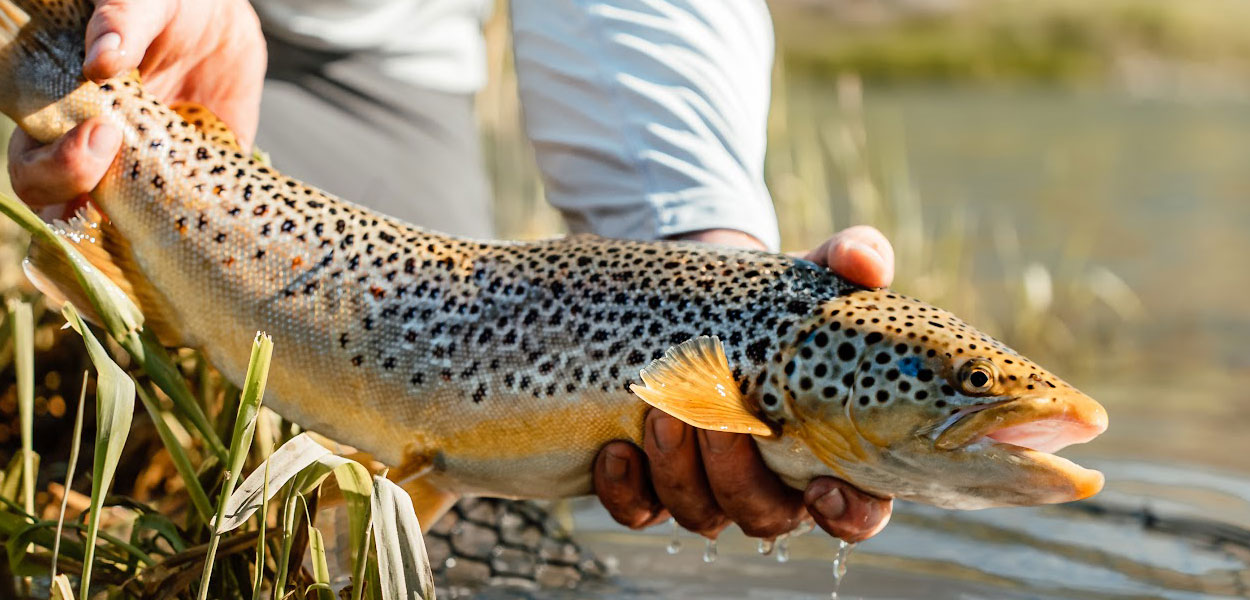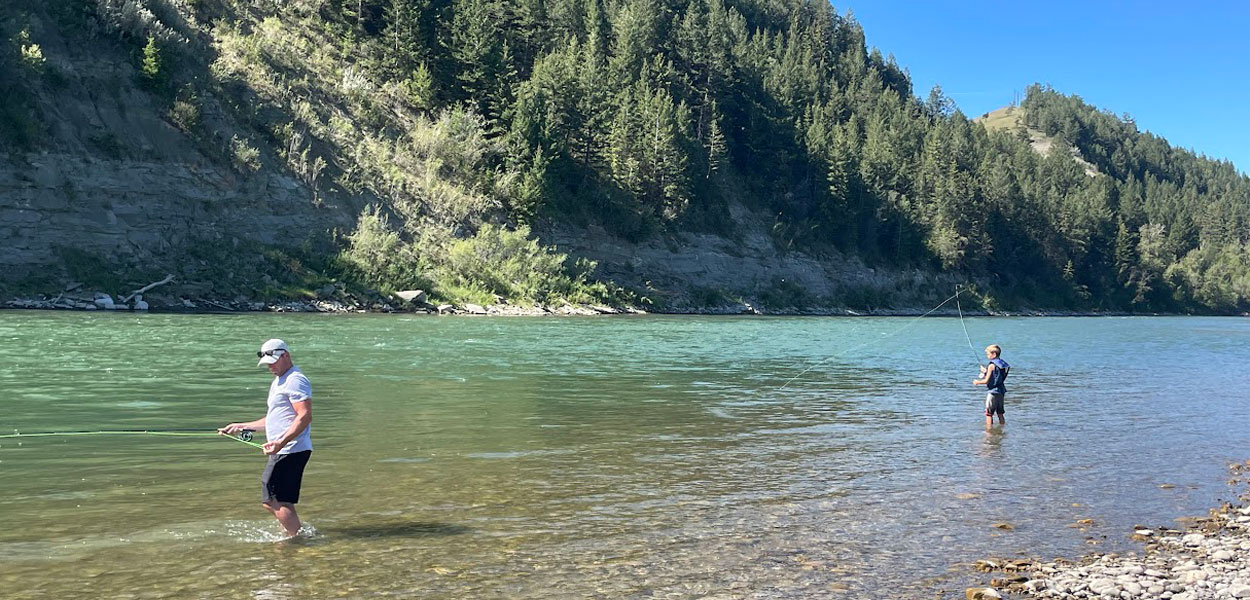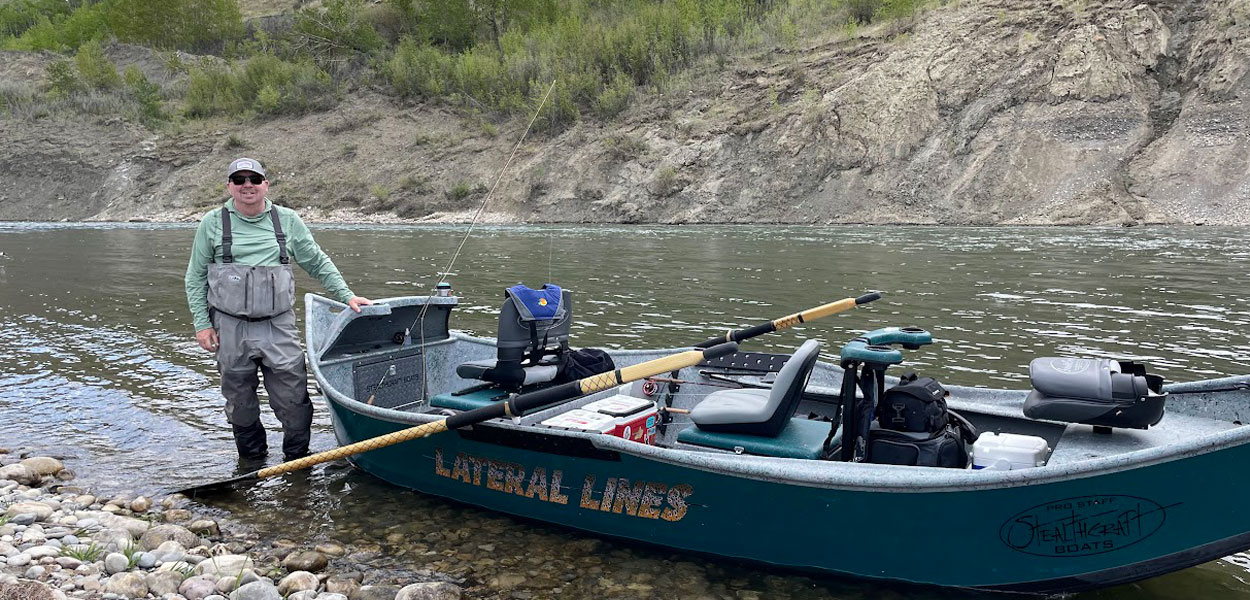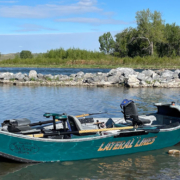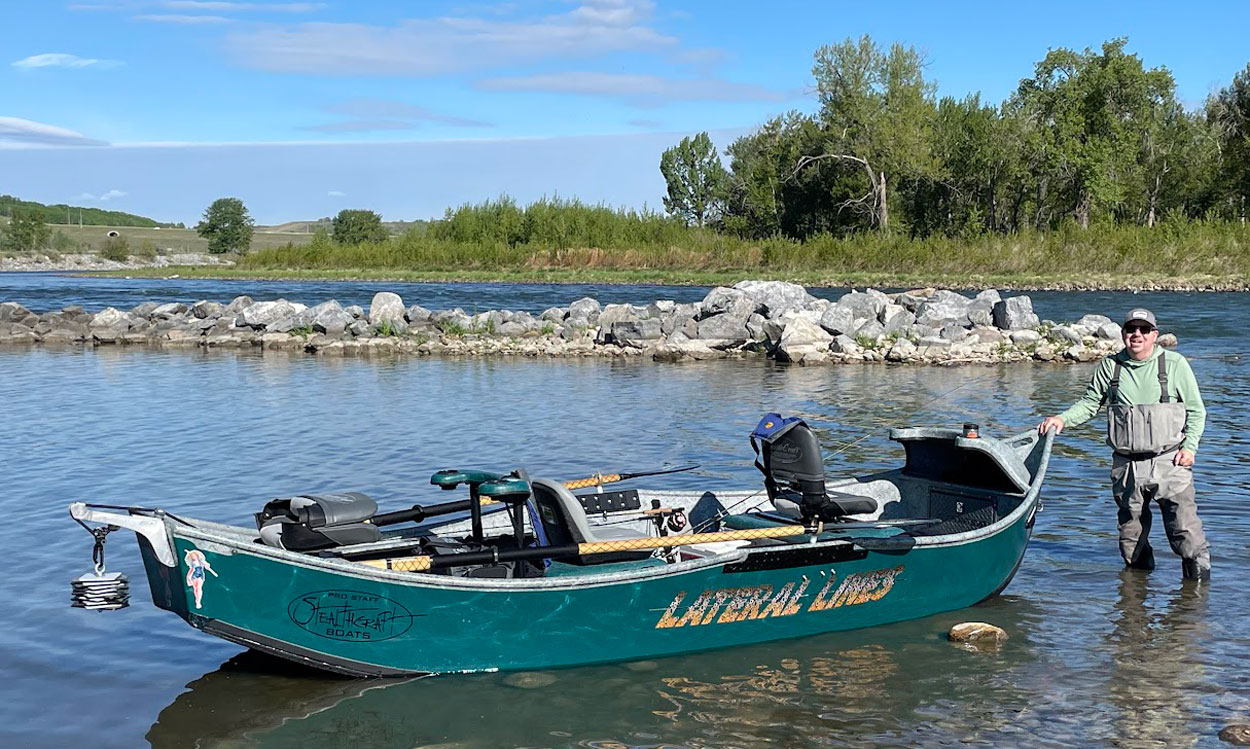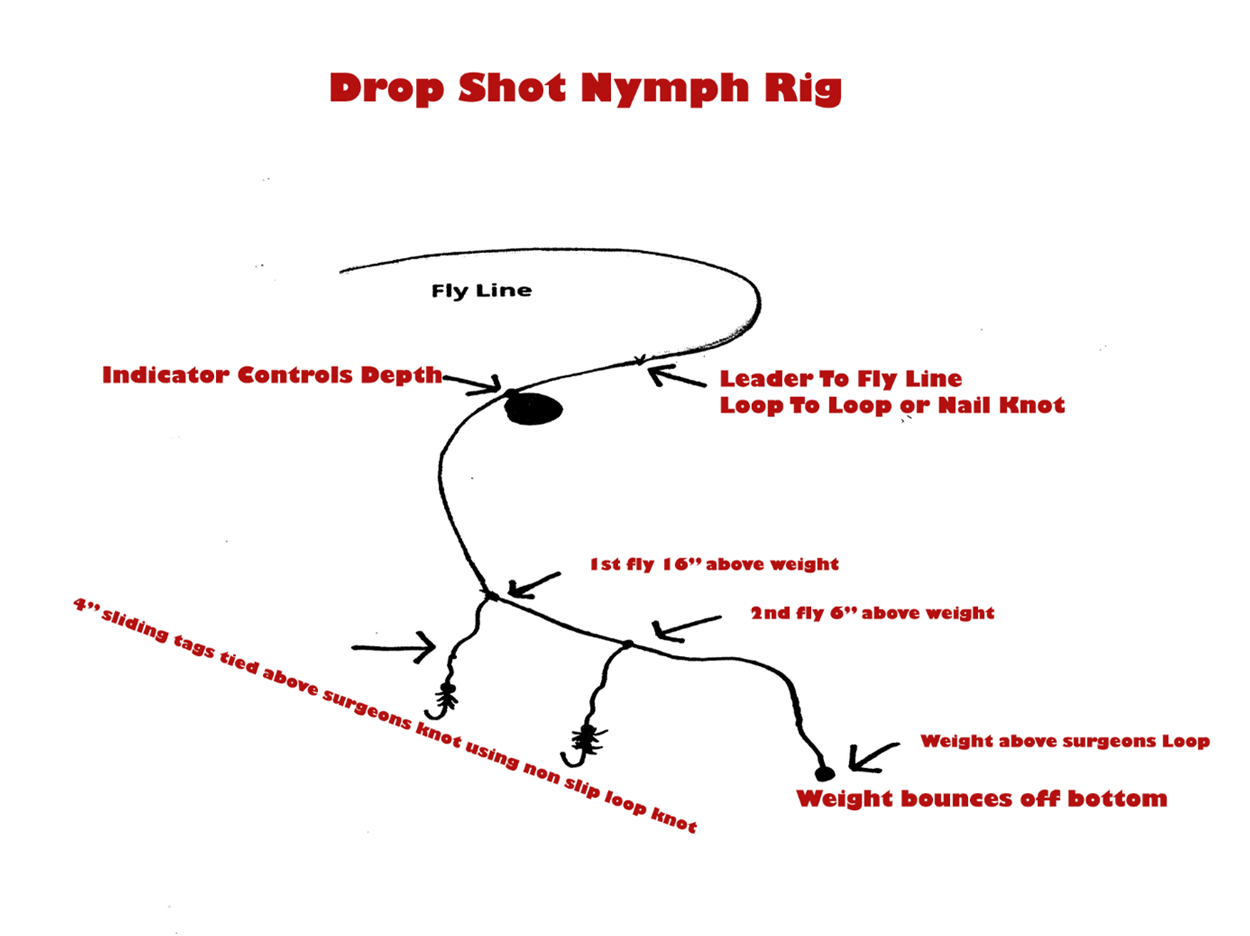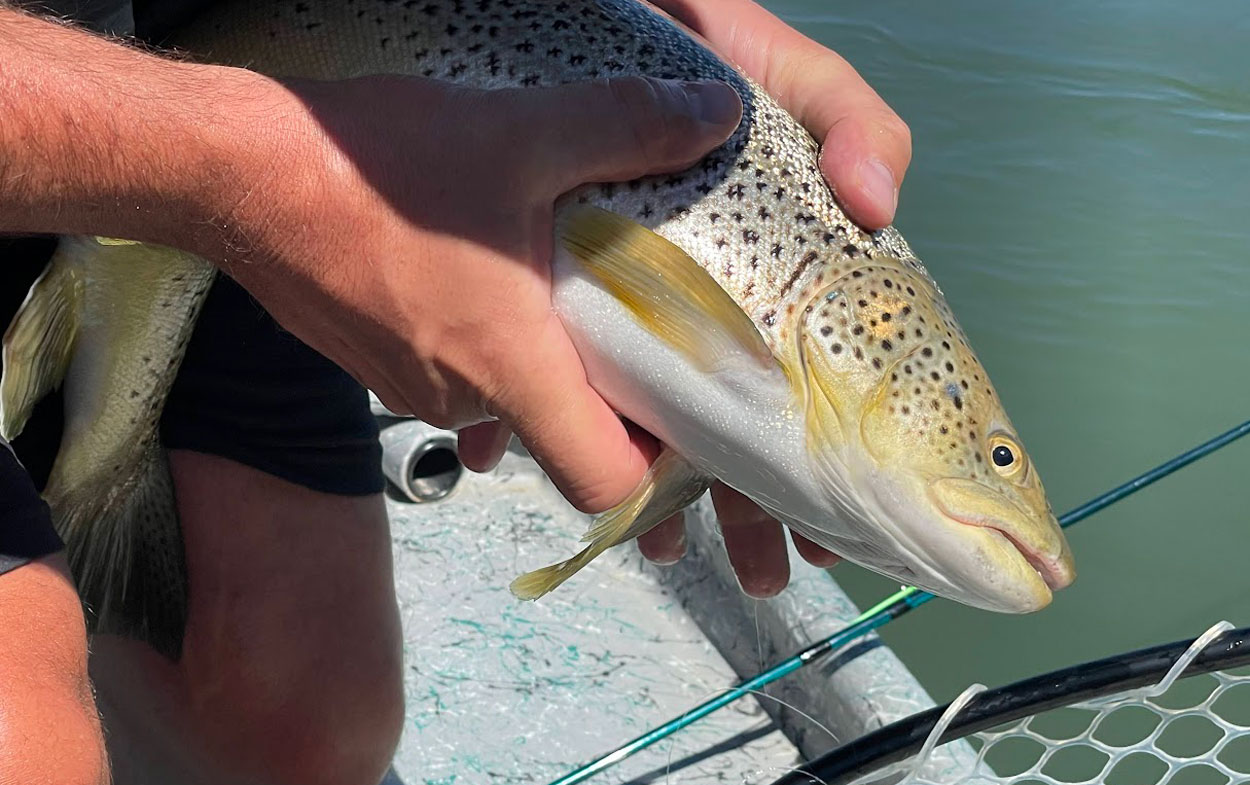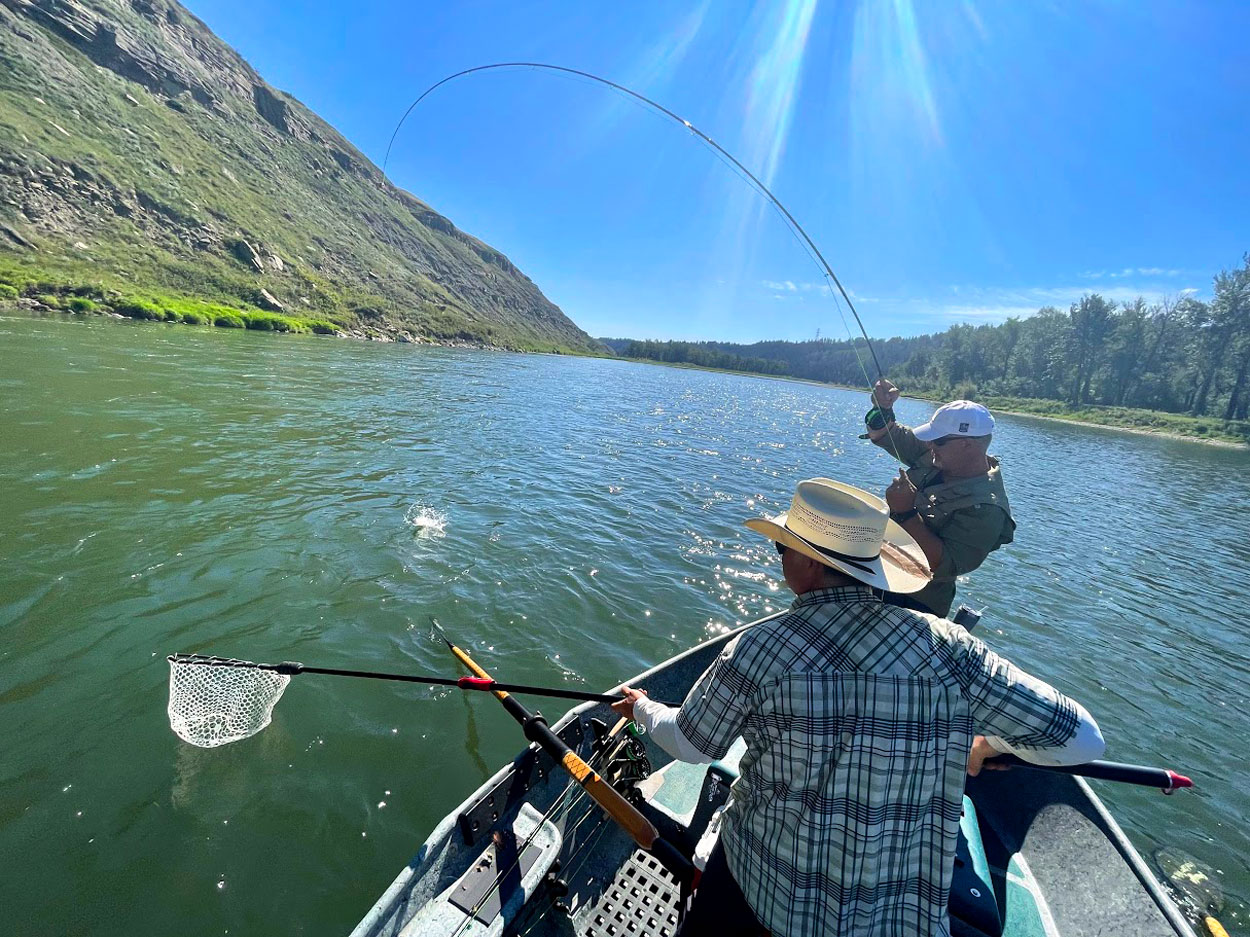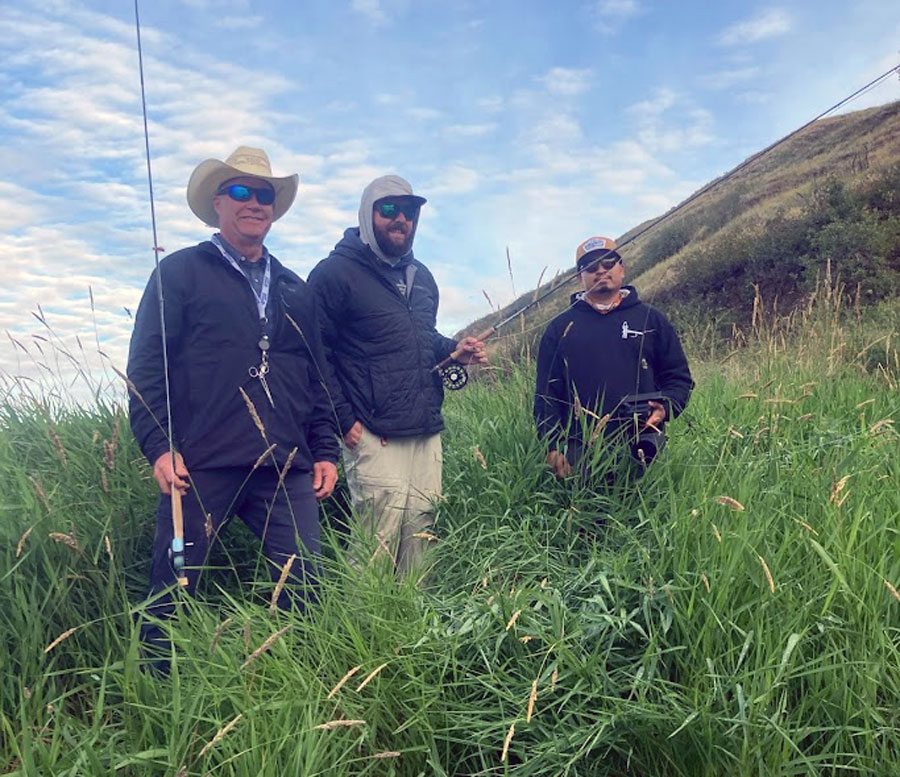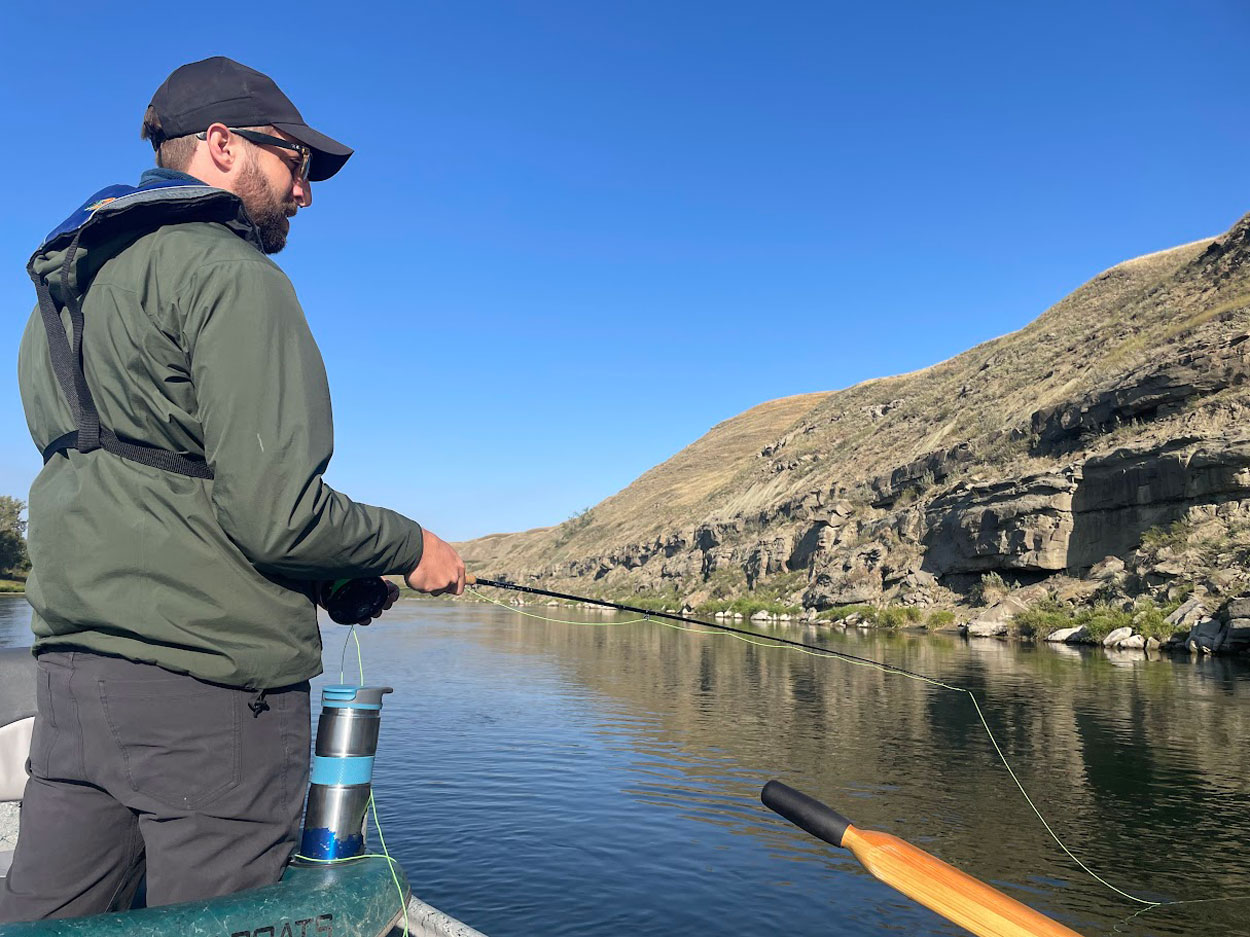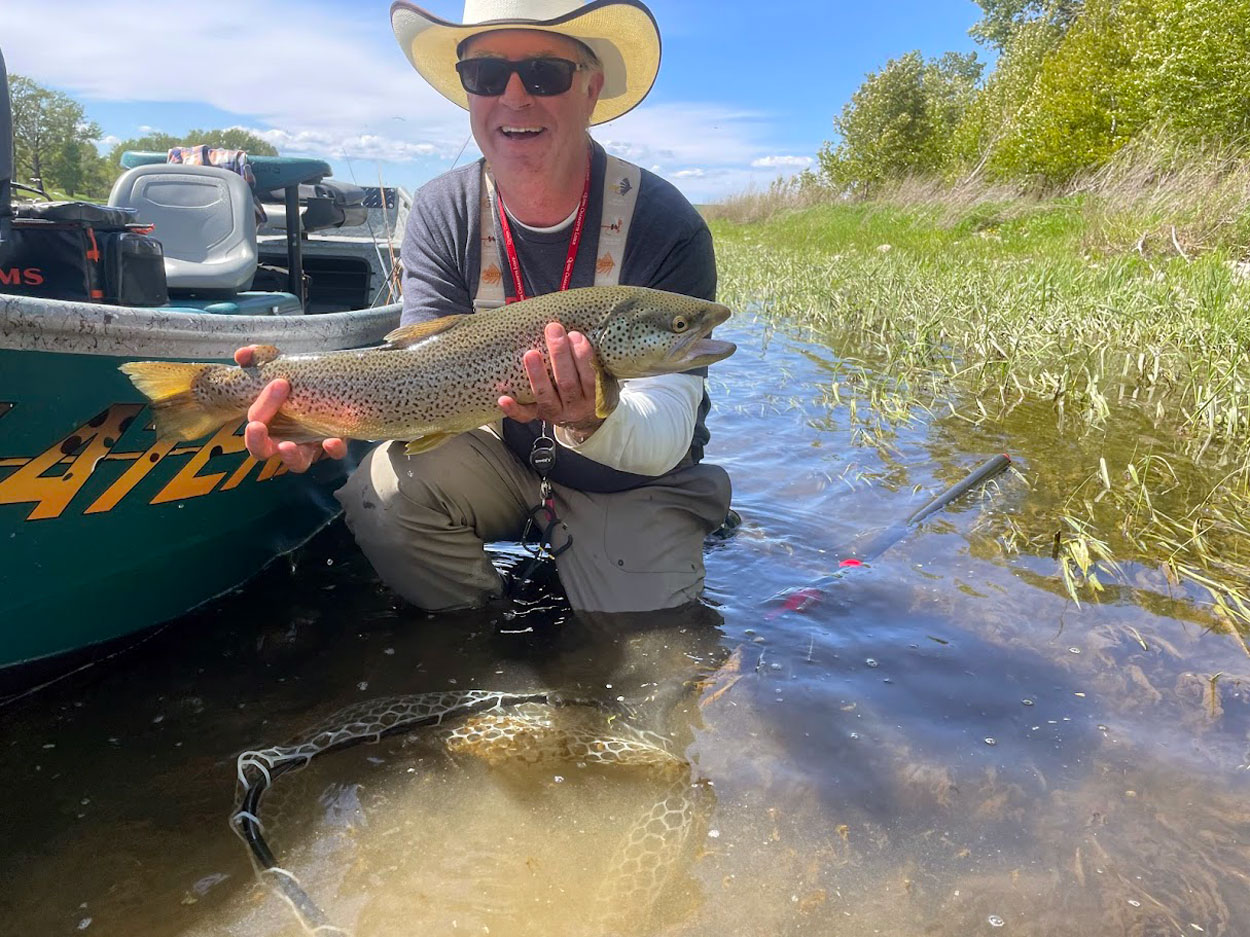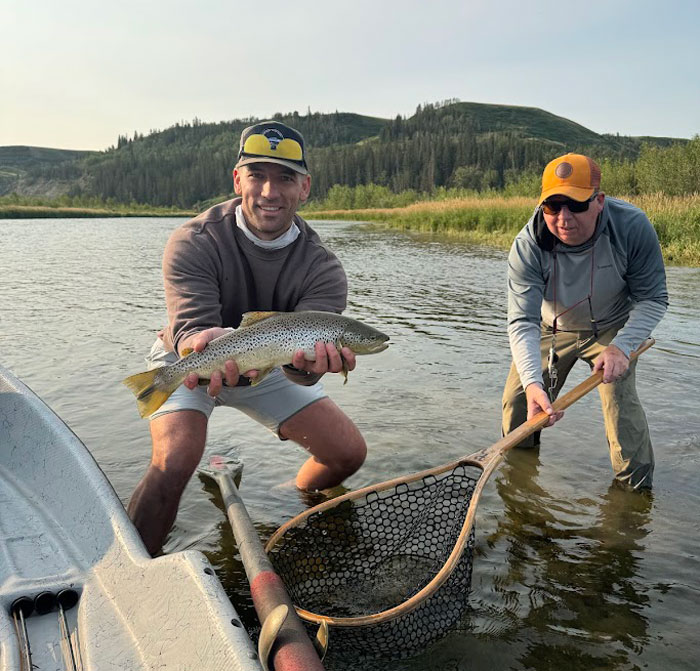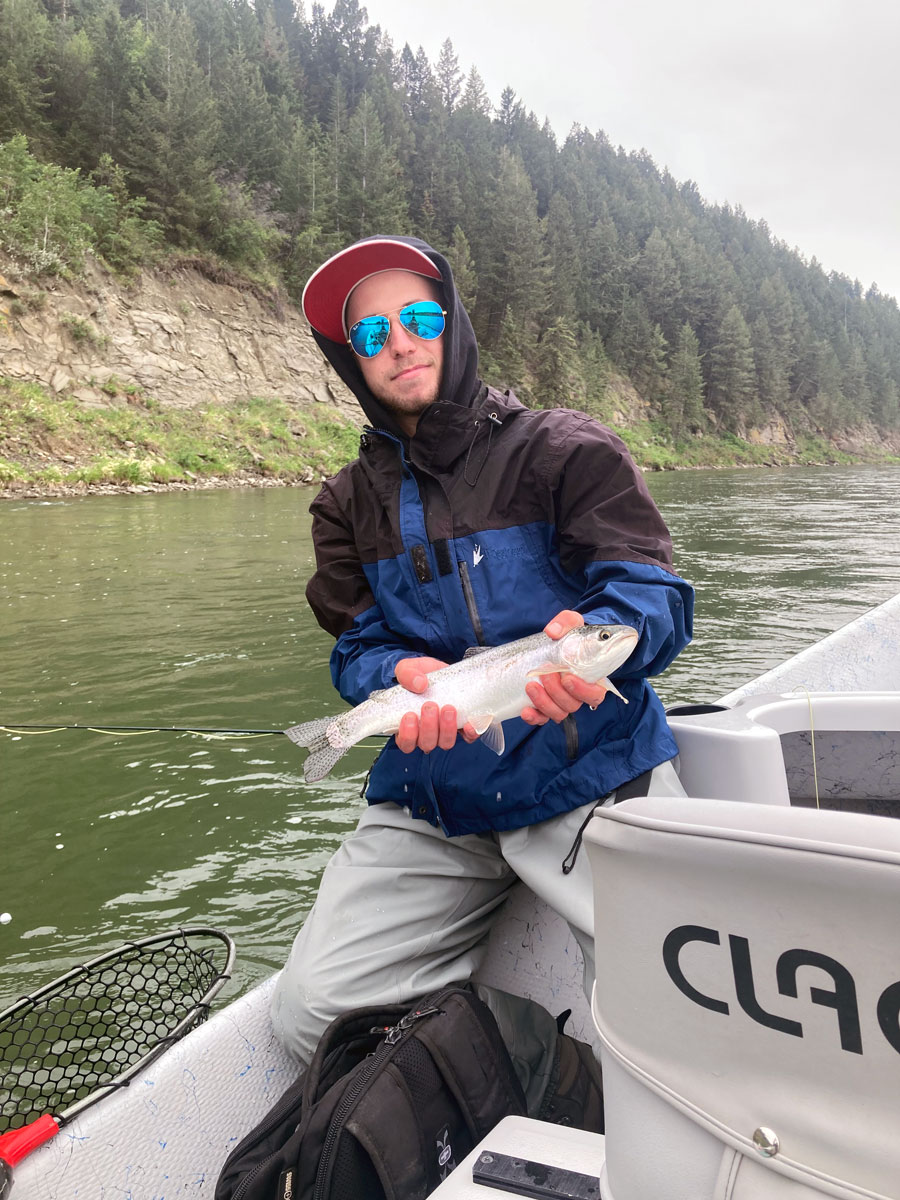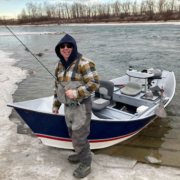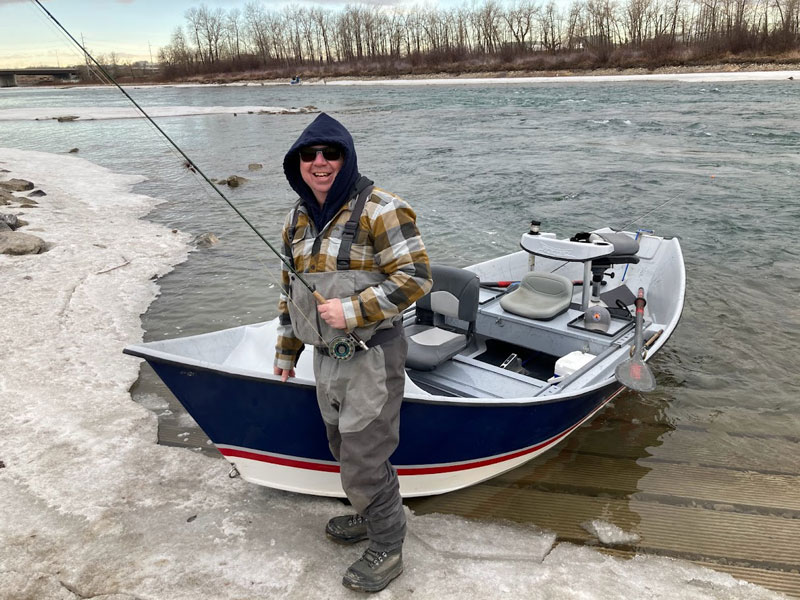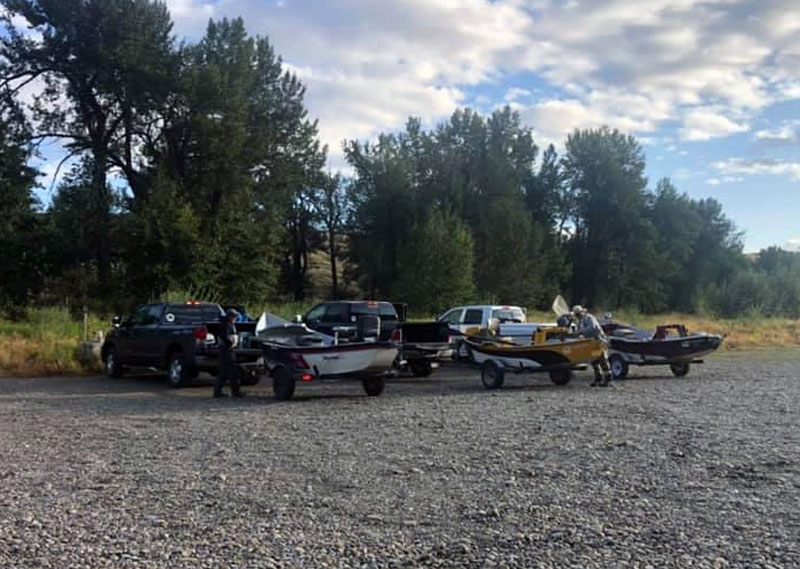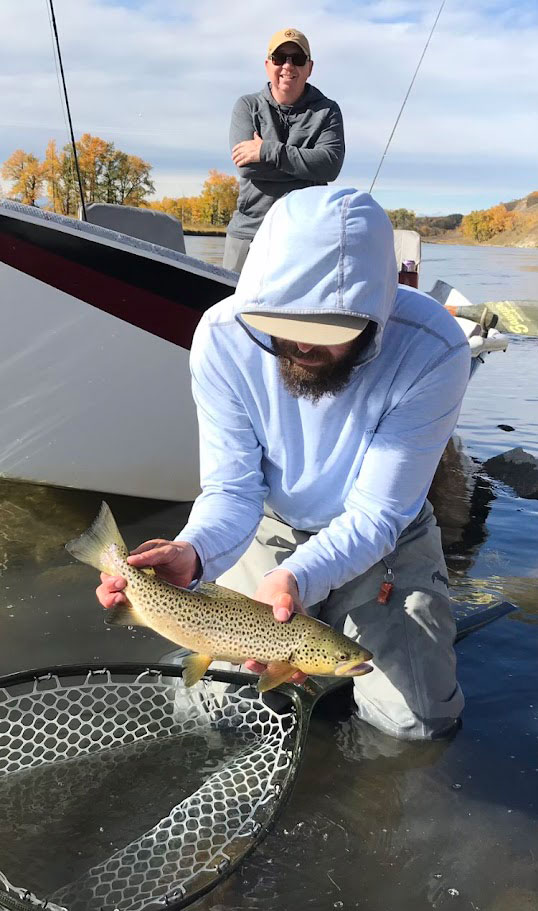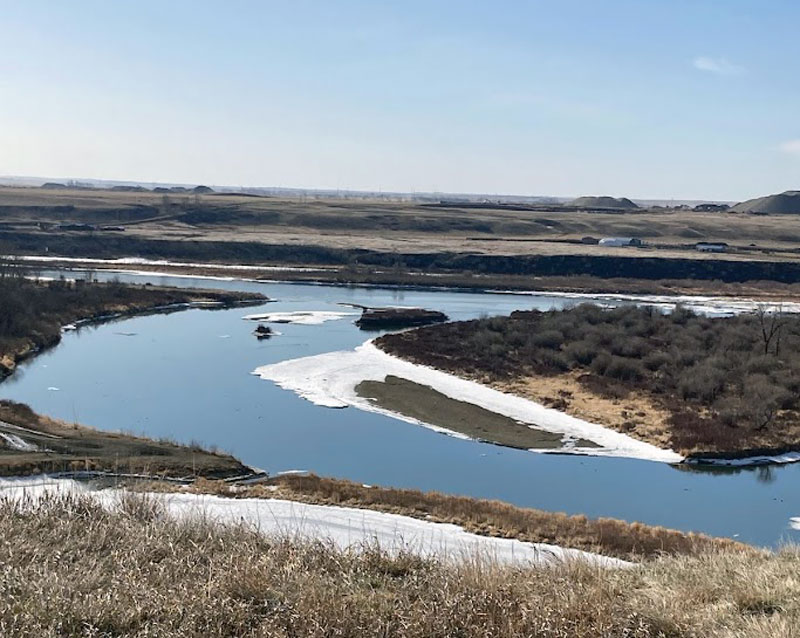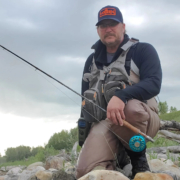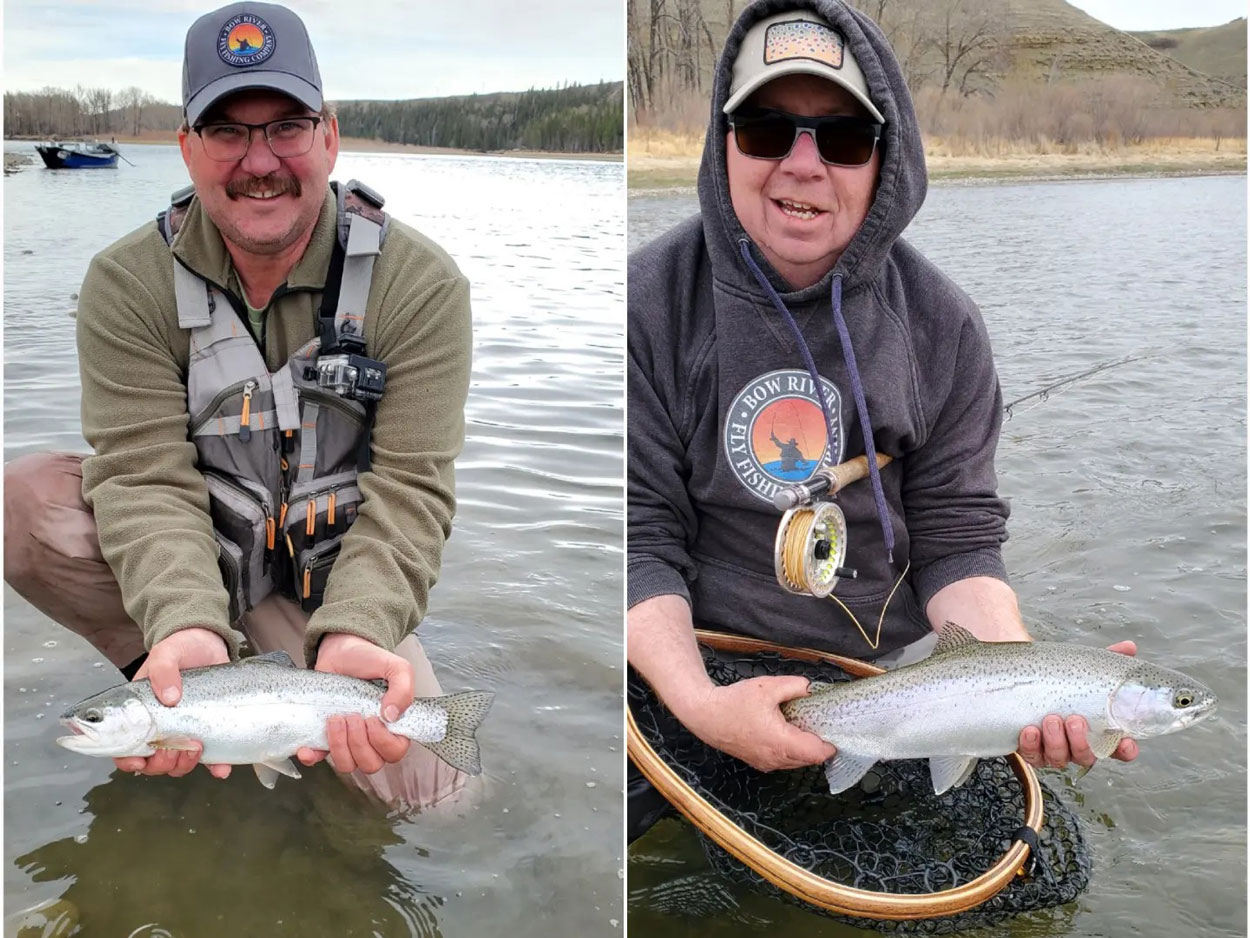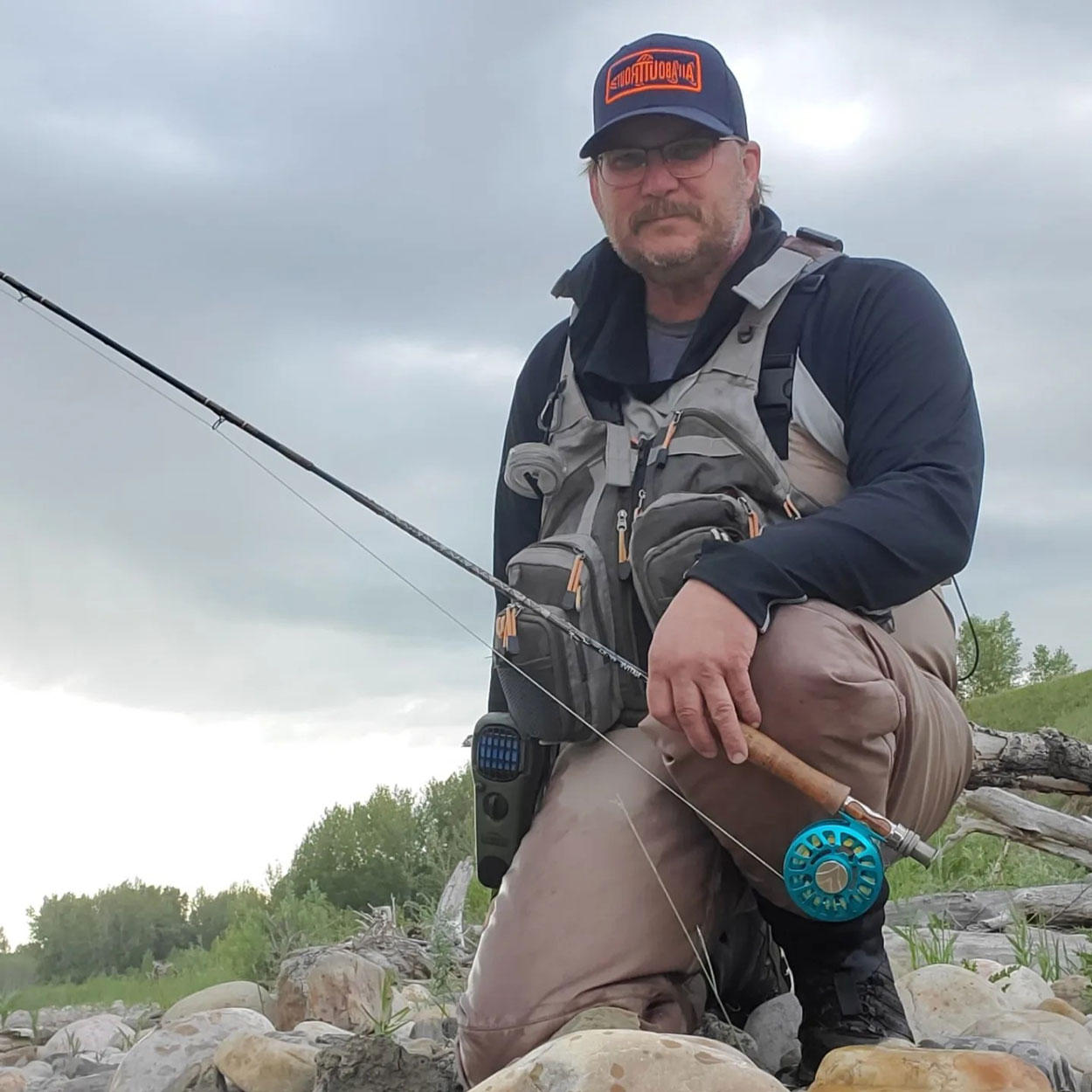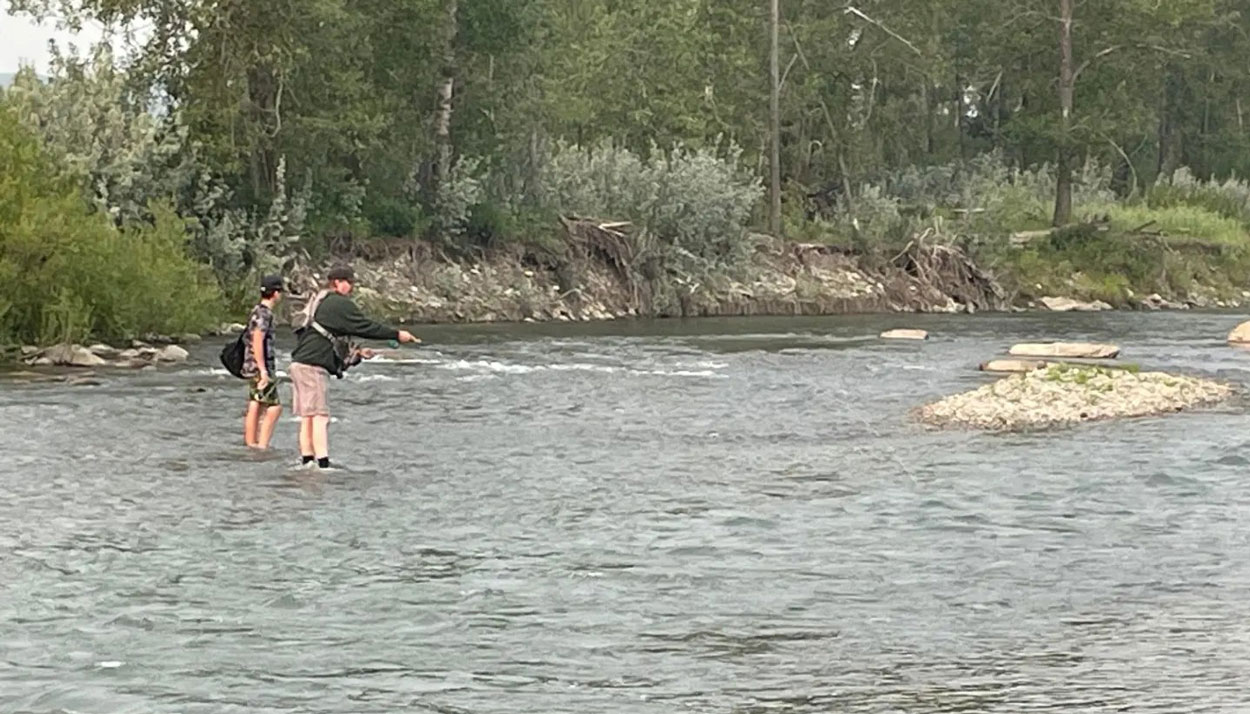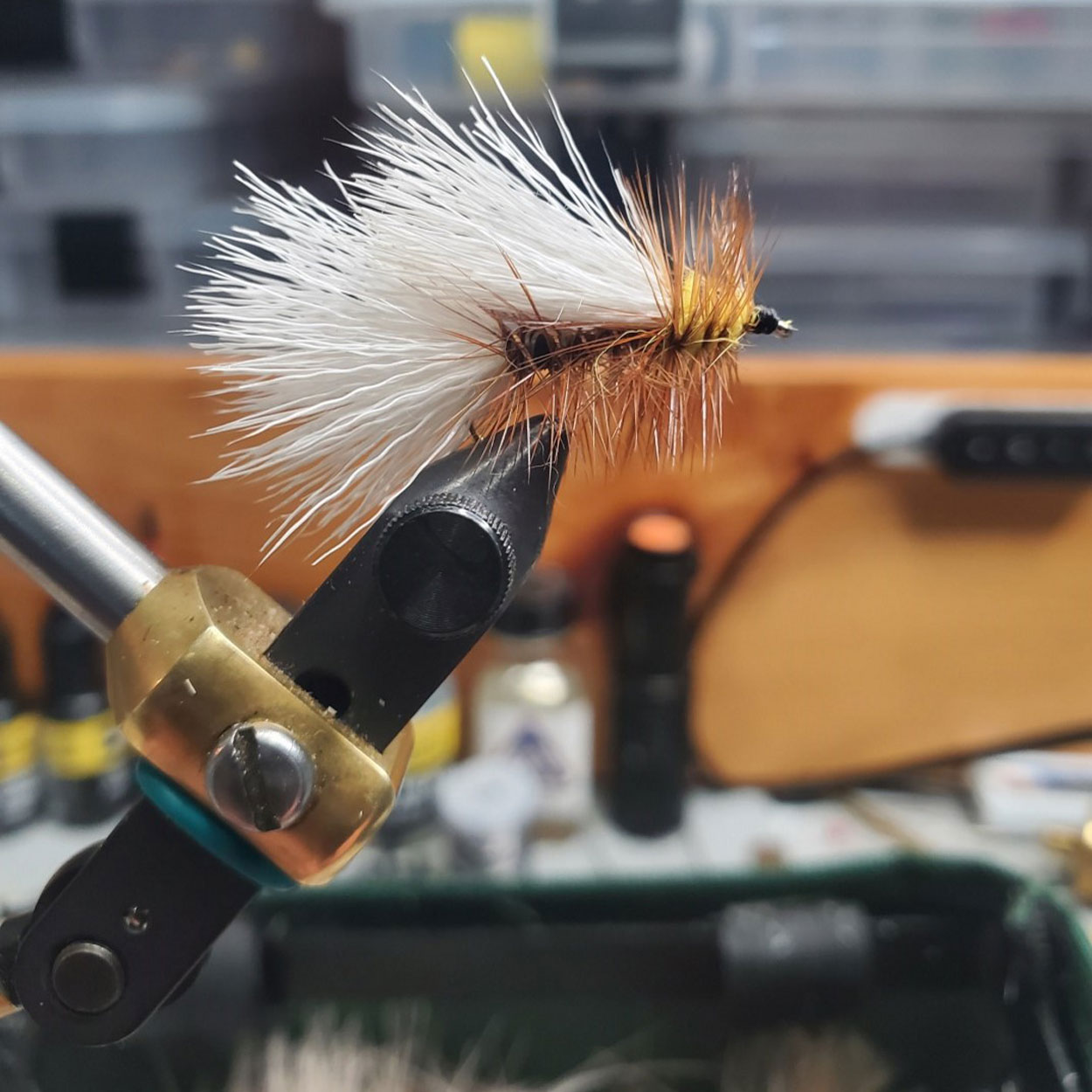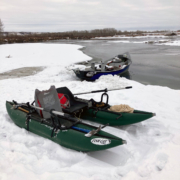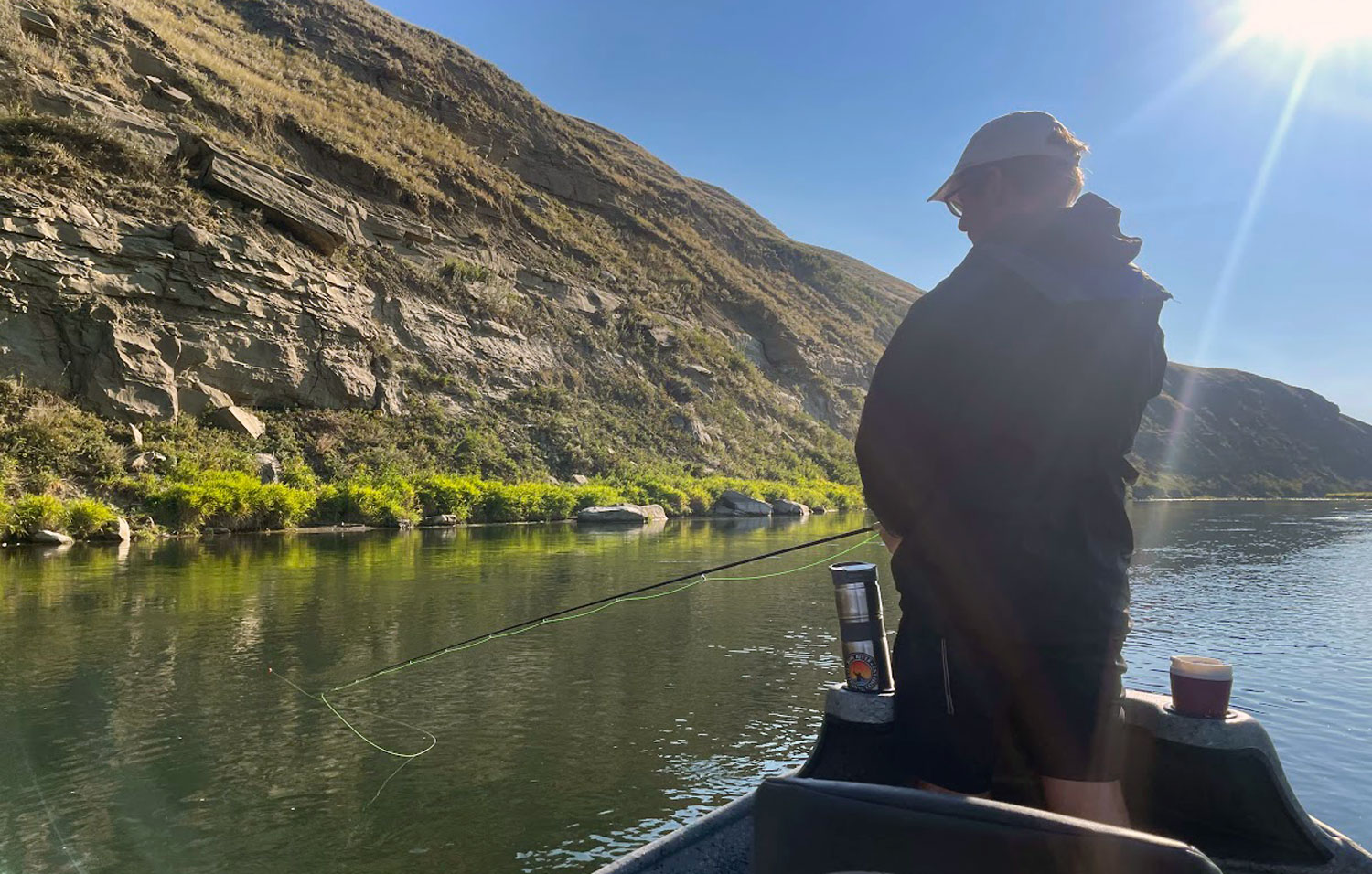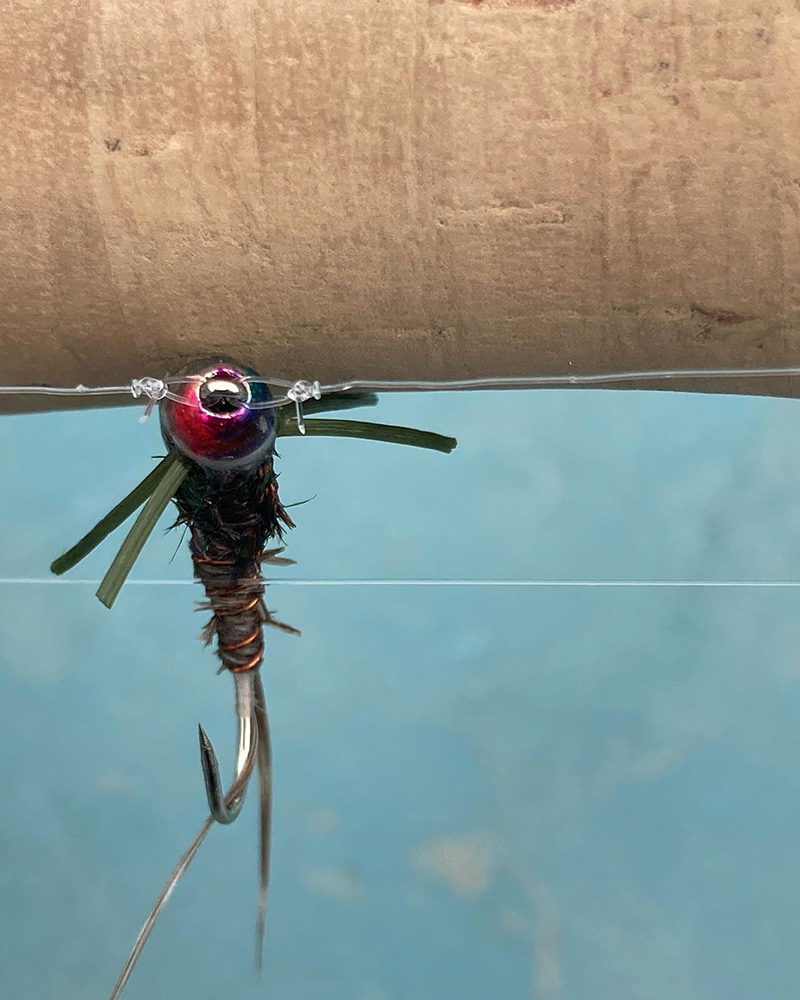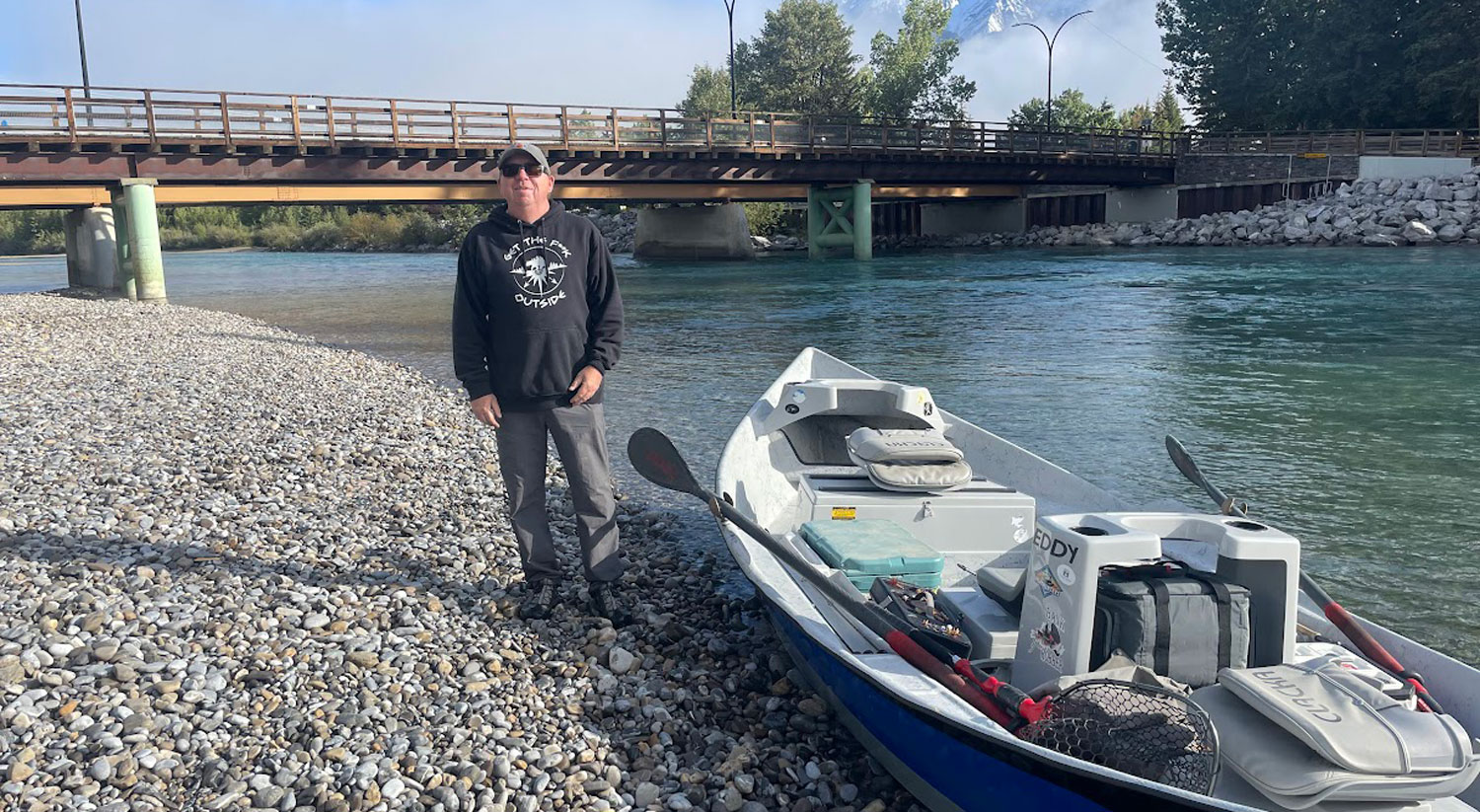I am writing this one as a caution. I’ve spent countless hours on the Bow River, especially the stretch referenced in this edition of our blog. I am not proud of what you’ll read below. The caution or lesson is preparation and mitigation. Winter fishing is not typically my thing but we’re experiencing a mild winter so far and anglers are taking advantage of the open water on the Bow. I often walk Hopper, my fishing dog, along a ridge above the river where I can clearly see a five kilometre stretch of water. As of November 28th, the channels were all ice free where the river splits into three channels approximately one kilometer from the boat launch.
One of my favourite guests of our fly fishing trips asked if we could take a friend of his out for a winter float. The friend, having some health issues sounded like he really needed a day on the river and I accepted the trip. Besides, the weather was great and a fire with a hot shore lunch sounded like a fantastic idea, fish to the net optional. I needed to prepare, I headed out on my own for some recon the day before our scheduled float to find a few fish, drop off some firewood and enjoy some winter sunshine.
Legacy Island Launch
Launching at Legacy Island, also known as Jensen’s for many. It is December 1st and with plenty of slush visible in the current so I need to pick my spots today. I anchored a few times along the way, tossed some bugs and had a pretty good day that included hot coffee with a damn fine PBJ by the fire. My plan was to be home by 4pm to whip up a batch of chilli for tomorrows float.
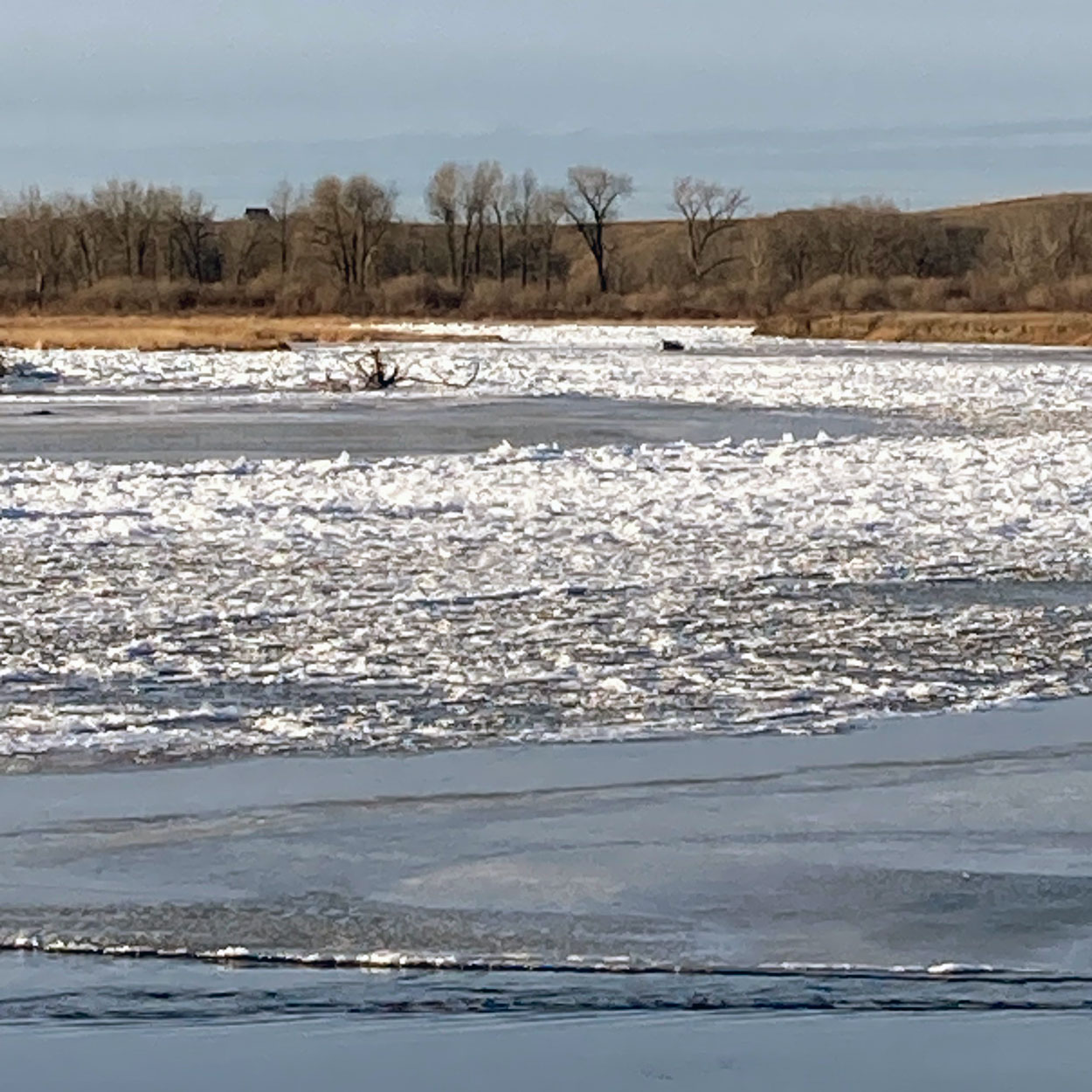
Lesson One
I should have checked the take out point at Carseland BEFORE I launched at Legacy. Its winter with some steep temperature changes overnight. This time of year, open water two days ago is NOT a good indication of open water today.
Lesson 1A
Fish with a buddy, preferably one smarter than you are.
The Bow River braids off near the irrigation weir at Carseland. Floating this section hundreds of times over the years, I know the channels and where I like to guide the boat. The current slows considerably up stream of the weir. Today I chose river right, heading towards the log jam. The far right channel, just up river from the big farm house, is full of slush and the river stops moving. The boat launch is roughly 700 metres away, just around the corner. I stop the boat, or rather, the accumulation of slush stops the boat. I am close to the high bank on river right, the island on river left. There is moving water on the other side of the island. I decide to row back upstream and float down the next channel over. Winter fishing conditions mean low, slow water flows and I easily and quickly row back up and over to the next run. Pointing the boat slowly through the thread of open water available, it’s now around 3:45pm and the light is fading. I notice my phone is at 1%. Dammit!
Lesson Two
Take a charging block in the boat or backpack. I nearly always have one of these with me as part of my safety gear. I didn’t today.
I make a quick call to my wife and let her know what I’m up against. We agree to give me a couple of hours and then she’ll worry. From here, the middle channel is on my right or a substantial slow water channel to my left. I typically avoid the left channel. It’s slow and appears to be frozen all the way across. I drag the boat onto an ice shelf and explore the middle channel. I break through easily into thigh deep water. With effort, the boat moves along the ice but my feet break through. The good news is, I’m slowly moving towards the launch.
It’s now 4:20pm, I’m quickly losing light. Struggling with the boat to around a half kilometre from the launch, the ice gets thicker and the water is now above my waste. I’m in waders with good thermals, wool socks, well layered and still comfortable. I have great gear. I’m getting tired and push the boat closer to the shore. I’m behind the boat, lifting my knees to the ice in order to break through and keep moving. The river bottom is softer as I approach the shoreline and I’ve managed to find a deep pocket. Fantastic! The water is now chest high; I can’t go any further, risking cold water spilling over my waders. I move around, feeling for a shallow spot to rest on. It’s not there, so I retrace my steps to comfortable depth. It’s dark, I have no idea what time it is, and my phone is dead. I move the boat back along the line I just walked, so the ice has been cleared away. I’m looking for a path to shore. I’m in a slow eddy, inside shore bend. I need to point out this is an extremely low water year for the Bow River, however I’ve managed to find what I believe to be the deepest part of the river to walk in, while it’s dark and iced up.
This is the moment I swear a blue streak. Mad at myself for the situation. I shouldn’t be here! A couple of deep breaths, getting it together, then I experience cold, December river water spilling over my waders. There may have been one or two more F bombs dropped as I scrambled back into the boat, I am thankful to have a dry bag full of extra layers, including an extra heavy coat. Dry clothes go on quickly, my sweaty toque is replaced. A toque is a beanie for my American friends. The shore line, thirty feet off the bow, with ice barely two inches thick, and depth over my head seems like a long reach from where I am. I take a minute to think. I’m warm, dry and safe.
Lesson 3
Winter Fishing tip – Carry dry clothing. It’s easy in the boat. I passed this one with an A+.
My thoughts focus on keeping it that way. I punch a hole through the ice with my oar for a depth test, we’ll call it eight feet or, too damn deep! I spend some time chipping ice with the oar at the bow; slide the shaft to the river bottom from the stern, pushing the boat towards the shore. A slow process, but I’m getting closer to the island. This repeats itself for a while when I hear a rumble growing upstream. It sounds like a waterfall. Quickly, I realize flowing water is pushing just under the ice surface with a surge from up river of my position. Perfect timing as the ice gives way and current pushes me directly to the shore of the island. Thank you for a little break Mother Nature! Listening carefully and straining my eyes I can’t tell if the surge is enough for me to ride it into the launch, which is roughly only a half kilometer downstream now. No luck. The water flowing over top of the ice has re frozen.
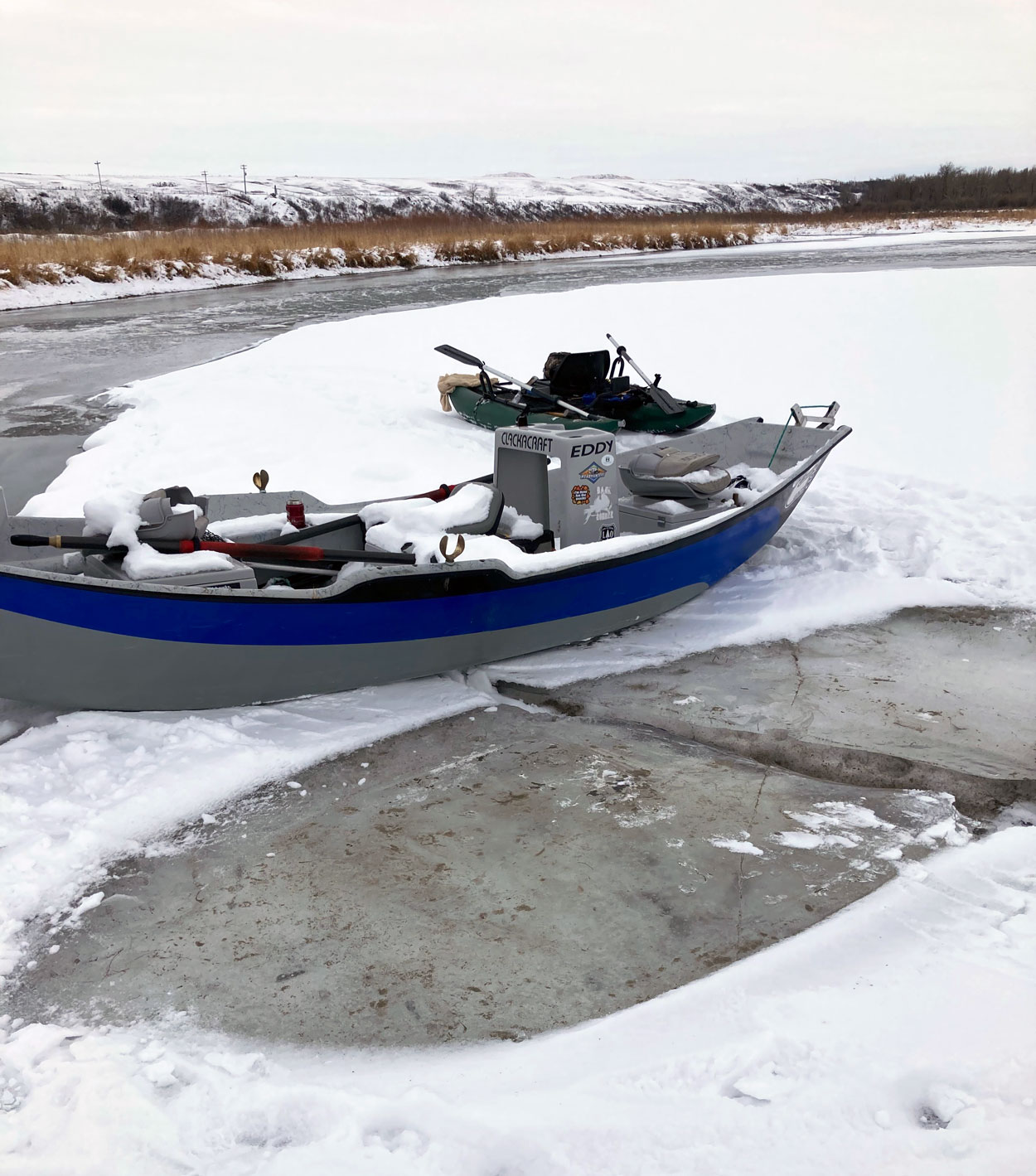
Lesson 4
Wear your life vest.
I’ve lost track of time here but at some point I see headlights headed down the launch access road. My cell phone has been dead for a while, so I’m hoping Tara, my wife, has called my oldest and best friend and fellow fly fishing guide, Kevin. We’ve been friends since our elementary school days and there’s no one I trust more. Damn we’ve been through a lot and spent some great times together! Tara called Kevin at 6:02pm she tells me later. Thankfully, the headlights belong to Kevin’s truck. I see the truck stop at the launch and I call out. No answer. At this point I’m not sure if it’s him. What I don’t know, is Kevin has called my wife and is letting her know my truck and boat trailer are at the launch, but I am not. Kevin says he arrived at the launch around 7:30 pm. He hangs up with my wife and calls out my name, I answer back and we establish he needs to stay put and I’ll work on chipping ice and making my way closer to the launch. He can’t see me, but he knows the river well and from my voice, he knows where I am.
Lesson 5
A working flash light. A total fail for me here. The batteries were corroded and my light didn’t work. My headlamp with fresh batteries on board is sitting on the kitchen counter at home.
Spirits are renewed, but the reality is, I’m not getting out of here without some help. Darkness, Cold, Ice and Water need to be respected and this is no place to be stubborn. Thankfully my wonderful wife decides, unknown to me, this is now an emergency and instructs Kevin, with his agreement to call 911. Kevin yells an apology and the call goes out. The apology I think because he knows I’m stubborn as hell and still think I could get out of this.
Fire, Police and Paramedics are all dispatched. The boat launch is lit up from emergency vehicle lights. Communication is established by yelling back and forth until the fire truck turns on the PA and they talk to me occasionally, checking on me, along with letting me know they’re working on getting me off my little island. Eventually it’s decided a helicopter will be needed to lift me out. Hawcs agrees, thankfully, to help and after a little search light work, they find me. Impressively landing on a postage stamp size dirt slab the Calgary Police welcome me into a warm chopper cabin and lift me the short distance to the Carseland Fire Station. The boat and all my gear are left behind. I’ve had no sense of time being out here, but it’s been 10 hours since the call to Tara letting her know I might have a little trouble getting home. I only realize the timeline after the helicopter ride when I see the clock in Kevin’s truck. It’s 2am. I was certain it was around 9pm at the latest!
Thank You, First Responders!
I cannot express my gratitude properly to the first responders, Kevin and Tara. Having the lights simply visible and the communication while they formulated the rescue plan was invaluable. Had I been alone, with no communication or sense I could get out of there, I know my mind would have gone to some dark places. Thankfully, I remained warm, comfortable and calm during the whole experience, other than a brief, ear splitting swearfest. I am only embarrassed. This could have gone very differently and had a tragic ending as the first responders pointed out. I will add here that I did have the means to start a fire, but I was pretty comfortable at -10c with very little wind. Had it been any colder, I would have scrounged up some dead wood and started the fire. This also would have made it far easier for the helicopter to find me. For some reason I didn’t show up on the thermal camera, so maybe I was colder than I thought.
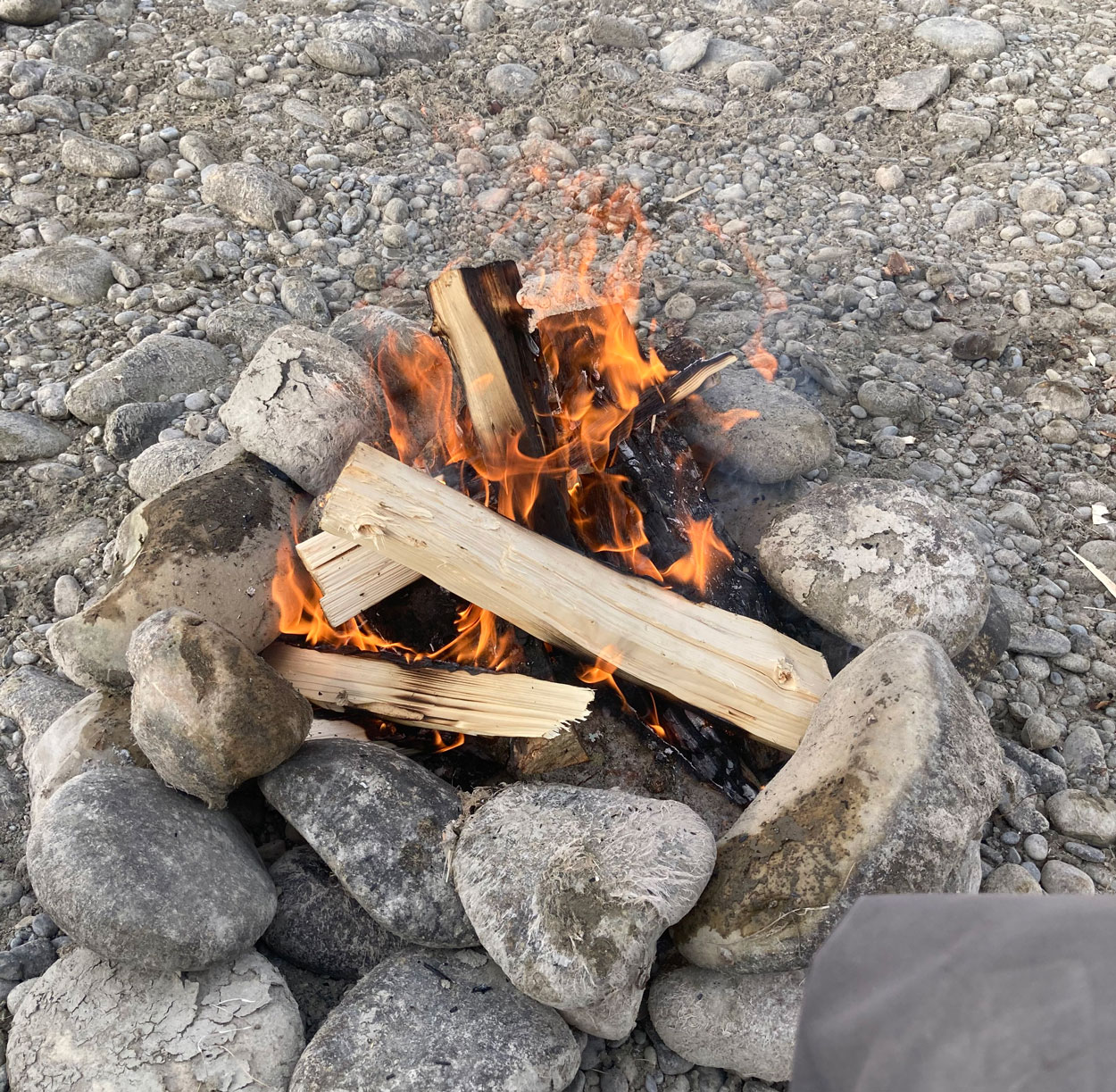
Winter Fishing Safety Kit
I have already added items to my emergency kit. If you search winter survival, or winter safety kit, or boat safety kit you’ll find all kinds of information regarding what you should have on hand. Be prepared, in fact be over prepared if you have room. Here’s a link to one of the blogs I found helpful. https://mrmountainman.ca/blog/build-your-emergency-kit I have most of these items, but they didn’t do me any good in the garage while I was stuck on the ice! Don’t make my mistakes and please be prepared anytime you head out to wet that line.
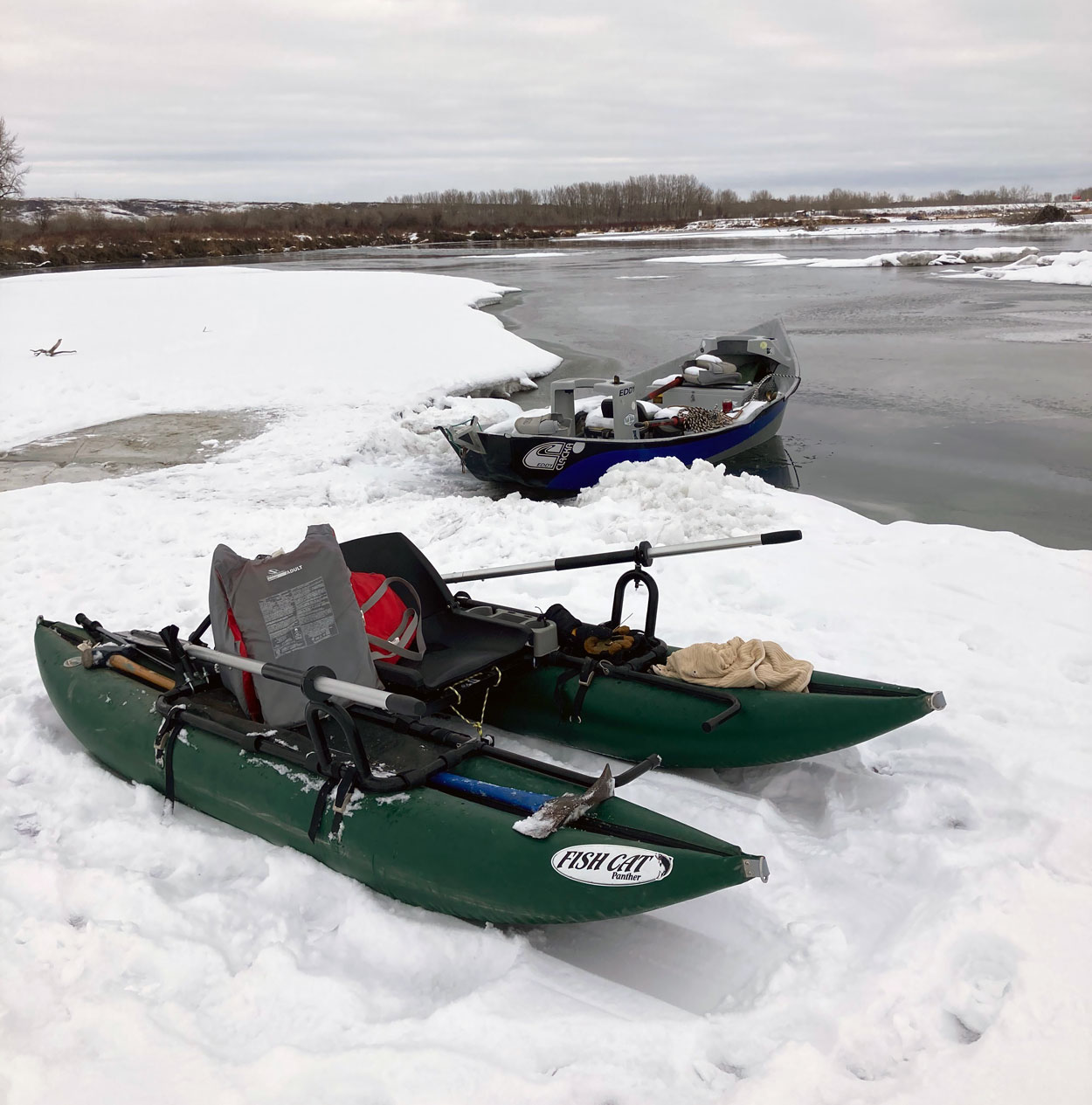
Drift Boat Recovery
The channels opened up again briefly with some passage to the boat launch several days later. Kevin and I scoped out a route from the east bank. We dragged my single man pontoon boat up the ice, above the drift boat. I crossed open water to the island. The boat was resting in the next channel where I left her, bottom frozen to the ice. It took a couple of hours to man handle her to open water. Once she was floating, I threw the pontoon across her stern and we floated to the take out. Kevin had made his way on shore back to the boat launch and chipped a perfectly sized opening, with the trailer already backed in. The “Mad Drifter” is now safely in the garage unharmed. I retrieved all my gear and only one rod tip was sacrificed.
Thank you again to Tara, Kevin and the First Responders for getting my ass off the river that night! This river rat is forever grateful, thankful and learned his lesson.



